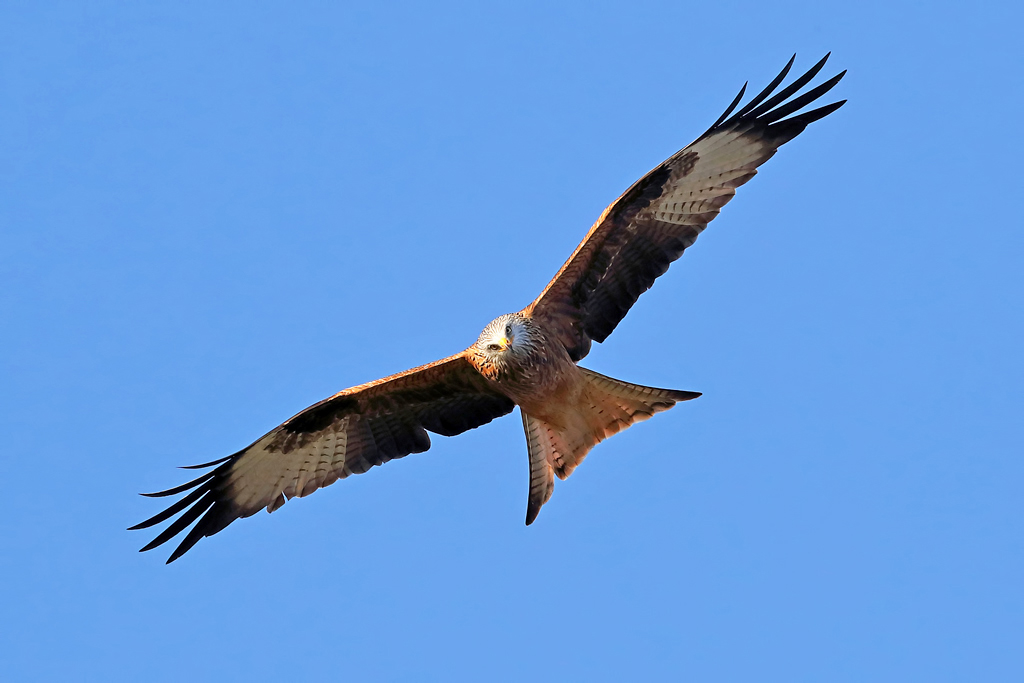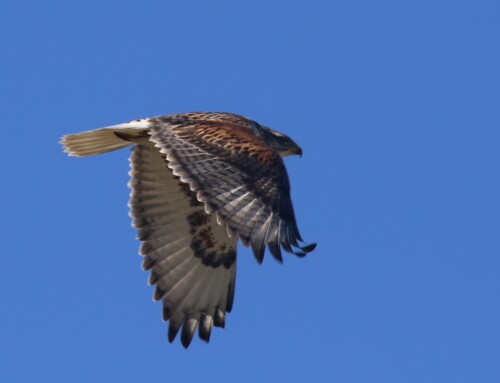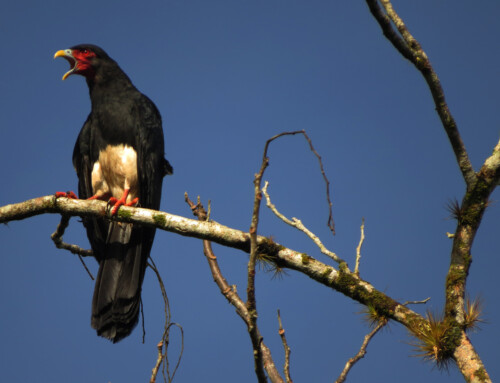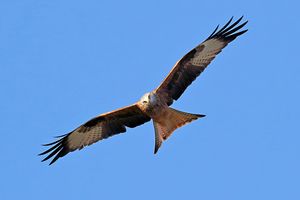 LINKED PAPER
LINKED PAPER
Age, landscape, and arrival date explaining ranging behaviour of wintering red kites in southwest Europe. Panter, C.T., Literák, I., Raab, R., Tolhurst, B.A. & White, R.L. 2021 Journal for Wildlife Management. doi: 10.1002/jwmg.22147 VIEW
Knowledge of natural and human-related factors that affect a species’ movement behaviour is essential when studying animal ecology. The field of movement ecology has advanced rapidly in recent years, affording us the ability to study how species, including those that range widely, travel across landscapes and large geographical areas. Such studies can directly benefit biodiversity conservation and management, for example, by advising planning for new renewable energy infrastructure such as wind farms.
Raptors (species in the families: Accipitridae, Falconidae, Pandionidae, Sagittariidae, Cathartidae and Cariamidae) and owls (Strigidae and Tytonidae) fascinate me. Within ecological networks, they often regulate ecosystem processes due to their position within food chains, occupy nearly every continent on the planet and are diverse in their morphological form, ecological function and behaviour. They also play important roles benefitting humans, especially those that have scavenging tendencies, by removing carcasses and reducing the transmission of zoonotic diseases.
There are 56 raptor and owl species across Europe. The Red Kite Milvus milvus is one of my favourites, distinguishable by its fork-shaped tail and characteristic calls. Until recently, the species was threatened with extinction across its range due to loss of suitable habitats coupled with direct and indirect poisoning. They are a large, facultative scavenger often feeding on rodents, rabbits and carrion. Kites regularly utilise urban environments and have even been known to feed directly from back gardens (Orros & Fellowes 2015). The species is native to Europe, recently being observed occurring in scattered populations across North Africa. Northern European populations tend to be migratory, conducting short-distance migration southwards to the Mediterranean. Southern European populations are resident due to milder winter conditions.
The Red Kite has been a focus of much research. We know a lot about the species’ breeding ecology (Pfeiffer & Meyburg 2009), the impacts of poisoning (Smart et al. 2010) and what the species eats (Davis & Davis 1981). However, we know relatively little about how the species behaves during the winter months. Winter can be a critical period for any migratory species, relying on sufficient food resources within their winter ranges to recover food reserves lost during the autumn migration. Furthermore, winter ranges need to have enough food available to last both resident and migratory populations until the following spring. So, what makes a good winter range and how do we measure this?
What did we do?
To answer these questions, we decided to explore which factors affect the movement behaviour of Red Kites during winter. We equipped 36 Red Kites with solar-powered satellite telemetry backpacks and monitored their geographic positions throughout winter between 2015-2020. In total, we obtained data for 70 individual kite winters as most birds survived more than one year allowing for data to be collected across multiple winters. All of our birds were from a tri-border area located between Austria, Slovakia and the Czech Republic (Fig. 1).
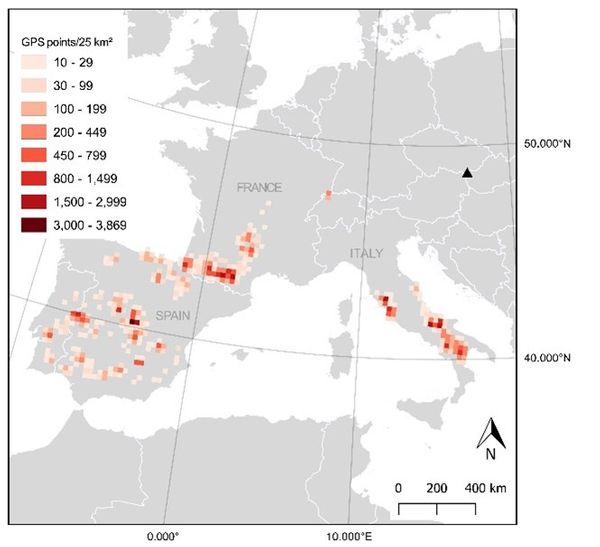
Figure 1 Kernel density estimators showing highly used areas by 36 Red Kites tagged with global positioning system-global system for mobile communication (GPS-GSM) transmitters wintering in the Iberian Peninsula, Italy, and the Pyrenees, 2015–2020. The black triangle shows the approximate nest and tagging locations of kites used in this study.
We quantified space use using three metrics: 1) total distance travelled by kites during the winter period, i.e., ‘distance travelled’, 2) winter home ranges (calculated using point kernel density estimators [KDEs] which generate a utilisation distribution [UD], a probability density distribution in 2-dimensional space, using the standard metric of 95%), i.e., ‘home ranges’ and 3) winter core areas (KDEs using a 50% UD), i.e., ‘core areas’. We measured the effects of various demographic, environmental and temporal factors on Red Kite space use, including: sex, age, % open land cover, % closed land cover, % urban land cover, % lowland (less than 500 metres above sea-level), winter region (the Iberian Peninsula, Italy or the Pyrenees), arrival date and winter duration.
We attempted to outsmart our kites and predicted that space use in over-wintering areas would be linked to the proportional amount of open, lowland or urban land cover they contain at the landscape level. Specifically, we tested whether winter ranges (95% home ranges and 50% core areas) would be smaller in areas with greater proportional open and urban land cover within kite ranges, in line with optimal foraging theory, i.e., greater abundance of food resources in open and urban habitats.
As predicted, ranges were smaller in areas with greater proportional open and lowland land cover; however, there was no effect of urban areas (Fig. 2). Older kites that arrived late to the wintering areas had larger home ranges than those that arrived early or on time. During winter, Red Kites often roost communally at night and we have even observed them roosting with other species such as Common Ravens (Corvus corax). However, we suspect that areas with abundant food resources have a limited carrying capacity. Kites that arrive earlier are able to occupy these areas and as we saw with our older kites that arrived late, these may be ‘pushed out’, as a result of intraspecific competition, and forced to traverse greater distances in the search of food.

Figure 2 Effects of: A) sex, B) age, C) percent urban land cover, D) percent open land cover, E) percent lowland, F) winter region, G) winter arrival date, and H) winter duration (days) on winter home ranges (km2; 95% kernel density estimators [KDE]) model variables; F = female, M = male, 1 cy = first calendar year individuals, >1 cy = individuals in their second calendar year or older) for 36 Red Kites wintering in the Iberian Peninsula, Italy, and the Pyrenees, 2015–2020.
Using satellite telemetry allowed us to approximate the location of and collect data on kite mortality. During our study period, 20 Red Kites died or the transmitter failed. We were able to confirm 13 deaths. Six of these kites died due to human-related threats, five were poisoned and the other had gunshot wounds. We compared survival between regions but found no significant differences, likely a result of our small sample sizes (Fig. 3).
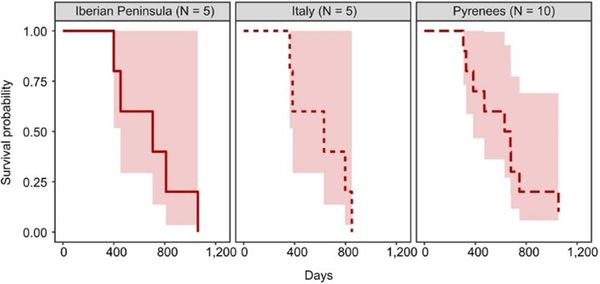
Figure 3 Kaplan-Meier survival probability plots for 20 Red Kites wintering in the Iberian Peninsula, Italy, and the Pyrenees, 2015–2020. Plots are fitted with 95% confidence intervals. Data include kites that stopped transmitting data whereby the cause could not be ascertained (Iberian Peninsula n = 1, Italy n = 2, Pyrenees n = 5).
So, what have we learned about Red Kite behaviour?
We know that open landscapes at low elevations are favoured by kites during winter. We suspect that kites favour lower elevations due to less climate variability. Agricultural areas and scrubland are good landscapes for kites to hunt in, and carcasses are more obvious out in the open. Despite the recent down-listing of the species on the IUCN Red List of Threatened Species, Red Kites are still targeted (directly or indirectly) by those wishing to poison wildlife. Carbofuran and other carbonates are a group of toxins often used to persecute wildlife and we welcome the continued monitoring and enforcement surrounding the use of these substances throughout the species range. The Red Kite, like other scavengers, provides irreplaceable ecosystem services to people. The species is complex in its intraspecific behaviour and is a valuable addition to the skies above Europe.
References
Davis, P.E. & Davis, J.E. 1981. The food of the red kite in Wales. Bird Study 28: 33-40. VIEW
Orros, M.E. & Fellowes, M.D.E. 2015. Widespread supplementary feeding in domestic gardens explains the return of reintroduced red kites Milvus milvus to an urban area. Ibis 157: 230-238. VIEW
Pfeiffer, T. & Meyburg, B.-U. 2015. GPS tracking of red kites (Milvus milvus) reveals fledgling number is negatively correlated with home range size. Journal of Ornithology 156: 963-975. VIEW
Smart, J., Amar, A., Sim, I.M.W., Etheridge, B., Cameron, D., Christie, G. & Wilson, J.D. 2010. Illegal killing slows population recovery of a re-introduced raptor of high conservation concern – the red kite Milvus milvus. Biological Conservation 143: 1278-1286. VIEW
Image credit
Top right: A Red Kite at Bellymack Farm © Walter Baxter CC BY-SA 2.0 Wikimedia Commons.
If you want to write about your research in #theBOUblog, then please see here.


